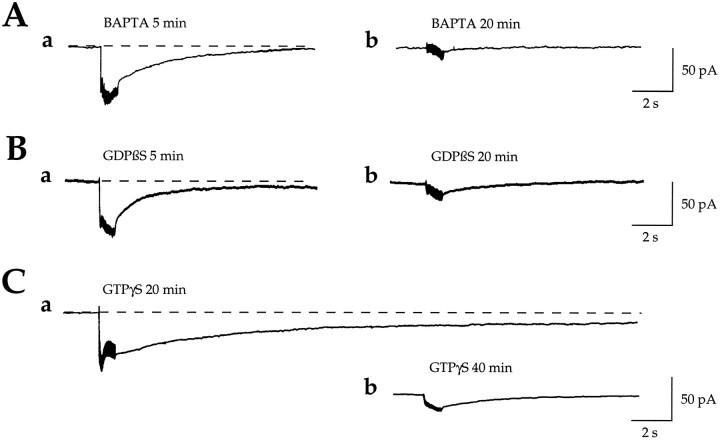Fig. 10.
HFS-generated nonionotropic slow inward currents are triggered by a rise in [Ca2+]i and mediated by G-proteins. A, Slow inward postsynaptic currents evoked in the same cell by two successive HFS (1 sec, 100 Hz, 3 mA) in the presence of the calcium chelator BAPTA (20 mm) in the CsGlu pipette solution within the 5 min after the passage to whole cell (a) and after 20 min of cell dialysis (b) (n = 5; paired data).B, Slow inward postsynaptic currents evoked in the same cell by two successive HFS (1 sec, 100 Hz, 3 mA) in the presence of the G-protein inhibitor GDPβS (500 μm) in the CsGlu pipette solution within the 5 min after the passage to whole cell (a) and after 20 min of cell dialysis (b) (n = 7; paired data). Note that in the presence of BAPTA or GDPβS a second HFS failed to evoked any subsequent response.C, Slow inward postsynaptic currents evoked in the same cell by two successive HFS (1 sec, 100 Hz, 3 mA) in the presence of the nonhydrolyzable analog of GTP, GTPγS (500 μm), in the CsGlu pipette solution after 20 (a) and 40 min (b) of cell dialysis (n = 6; paired data). Note that in the presence of GTPγS the first response evoked by HFS is significantly longer (even irreversible) than in control (see Figs. 6B, 7A-a,B-a) and that subsequent HFS-evoked responses are nearly abolished (b).

